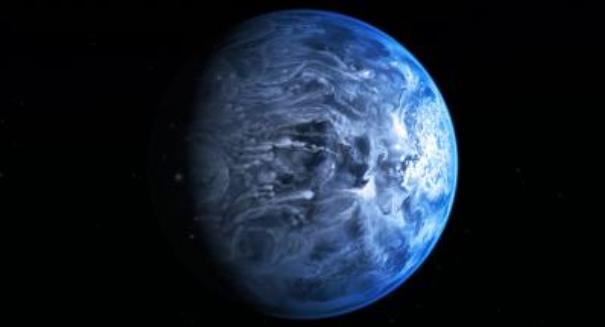
HD 189733B's deep blue color is due to a hazy, turbulent atmosphere believed to be mixed with silicate particles
Astronomers utilizing the Hubble Space Telescope have, for the first time ever, identified the true color of a planet circling another star. The planet, referred to as HD 189733b, would be deep blue if viewed from up close.
HD 189733B is a large gas giant circling very close to its host star. The planet’s atmosphere is unbelievably hot with a temperature of more than 1000 degrees Celsius. Interestingly, it also rains glass, which is blown sideways by 7000 kilometer-per-hour winds.
More than 63 light-years from our planet, this alien world is one of the closest alien planets to Earth that can be observed transiting across the face of its star. HD 189733B has been closely examined by Hubble and other telescopes, and its atmosphere has been discovered to be greatly transformable and exotic, with hazes and violent flares.
“This planet has been studied well in the past, both by ourselves and other teams,” says author Frederic Pont of the University of Exeter. “But measuring its colour is a real first — we can actually imagine what this planet would look like if we were able to look at it directly.”
To determine the planet’s true color, the astronomers determined how much light was reflected off the surface of the planet. This was made more challenging by the fact that the planet is faint and extremely close to its star. To set apart HD 189733B’s light from this starlight, the team utilized Hubble’s Space Telescope Imaging Spectrograph to look at the system before, during, and after the planet moved behind its host star as it orbited. As it moved behind its star, the light reflected from the planet was for a limited time only obstructed from view, and the amount of light seen from the system declined. This technique also reveals the planet’s color.
According to first author Tom Evans of the University of Oxford, astronomers observed the brightness of the entire system drop in the blue part of the spectrum when the planet moved behind its star.
HD 189733B’s deep blue color is due to a hazy, turbulent atmosphere believed to be mixed with silicate particles, which disperse blue light.
This particular alien planet is a great candidate for this type of measuring technique because it is a member of a class of planets called “hot Jupiters.” These gigantic planets are similar in size to the gas giants in the Solar System, but reside extremely close to their parent star. Though we lack a hot Jupiter close to Earth in our own Solar System, examinations of planets like HD 189733B are key to understanding this intense object.
“It’s difficult to know exactly what causes the colour of a planet’s atmosphere, even for planets in the Solar System,” notes. “But these new observations add another piece to the puzzle over the nature and atmosphere of HD 189733b. We are slowly painting a more complete picture of this exotic planet.”
Leave a Reply